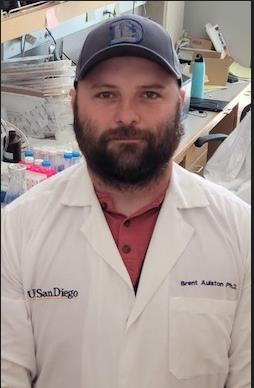
CRISPR-Cas9—the Nobel Prize–winning gene-editing system developed by Jennifer Doudna and Emmanuelle Charpentier—is on the cusp of breaking into clinical trials for Alzheimer’s disease, but experts note barriers that must be overcome and question whether scientists might be moving too quickly.
In Amsterdam last month at the Alzheimer’s Association International Conference (AAIC), researchers from the University of California San Diego (UCSD) and Duke University School of Medicine presented two different approaches leveraging CRISPR to prevent and treat Alzheimer’s.
At UCSD, Brent Aulston’s team is using CRISPR to edit the amyloid precursor protein (APP), a transmembrane protein expressed in many tissues throughout the body but concentrated in the synapses of neurons.
The first of these enzymes is alpha secretase. When APP is cleaved by alpha-secretase, a protective molecule called secreted APP-alpha is released. “In healthy people, the majority of the APP is being cleaved to produce secreted APP-alpha,” Aulston said. However, in Alzheimer’s patients, APP is pushed toward the other cleavage pathway, mediated by beta-secretase. “This causes kind of the classical toxic fragments known as amyloid-beta peptides.”
Using CRISPR tools, Aulston’s team is working to change the APP gene, “so that we get more alpha cuts and less of the beta cuts.”

Aulston emphasized that the intention is not to knock out the entire APP protein. “APP is a very important protein in the brain. It has a lot of functions. If you take the APP protein out of a mouse, the mice are smaller, their brains are smaller, there’s more neuroinflammation [and] they’re cognitively compromised. We still want that protein expressed.”
So, the researchers designed their CRISPR to edit out only a small portion of APP, aiming to keep the resultant protein from coming into contact with beta-secretase. Testing out the approach in mice, the team showed that the animals had fewer amyloid-beta plaques and markers of brain inflammation but more of the neuroprotective APP.
“You keep all the physiological functions of APP . . . and you actually get an increase in secreted APP alpha,” Aulston said. The mice also showed improvement in behavioral and neural symptoms. “We believe this demonstrates that, in mice, our potential treatment strategy is both safe and efficacious,” Aulston said in the abstract presented at AAIC. “These results justify future studies aimed at getting APP CRISPR editing into human testing.”
But Rudolph “Rudy” Tanzi, a professor of neurology at Harvard Medical School and Massachusetts General Hospital who co-discovered the APP gene, told BioSpace he has concerns about using CRISPR to alter this protein. “For fun, we would say APP stands for ‘all-purpose protein’ because it does so many things,” he said. Among other roles, he noted that APP helps to stabilize and integrate synapses and helps blood to clot in the event of an injury.
Tanzi added that amyloid-beta acts as one of the brain’s main host defense mechanisms. In editing out the amyloid-beta domain, Tanzi said two things will be lost: an antimicrobial peptide property that protects against infection and a checks-and-balances system that quells synaptic excitation firing. “Without amyloid-beta, the cells will keep firing,” he said. Among other potential problems, overexcited neurons can trigger proteins in target muscle cells to become stressed, misfolded and non-functional.
Duke Targets APOE
On the opposite coast, researchers from Duke University School of Medicine are using CRISPR-Cas9 gene editing to downregulate the expression of the APOE ε4 gene, which is associated with an increased risk of Alzheimer’s. It is estimated that 15% to 25% of the population carry this allele, while up to 5% have two copies.
The platform “demonstrated an efficient and precise editing of APOE ε4 and APOE expressions” in miniature brains derived from human induced pluripotent stem cell (hiPSC) from an Alzheimer’s patient and in humanized mouse models, the authors wrote in the abstract presented at AAIC. Importantly, they continued, the specific targeting of the ε4 allele “has resulted in no detectable editing of the ε3 allele in the isogeneic hiPSC-derived neurons.”

Tough Translational Terrain
Having proven the APP-editing concept, Aulston said his team has climbed the first mountain. “Now, we’re at the base of the other mountain, which is the translational side,” he said. “As it turns out, the human brain is a little more difficult to treat than a small mouse.”
On the first point, Schmitt-Ulms said the adeno-associated virus (AAV) capsids used in the delivery of the CRISPR machinery will generate an immune response that can limit the effectiveness of the therapies. “Around 70% of us have had exposure to natural AAVs and therefore carry antibodies in our blood that would destroy AAV-based gene therapy vectors,” he said. In addition, “the body has never seen CRISPR enzymes. They’re like foreign agents, and when you express them, there will be immune responses raised to them.”

As for delivery, “To date, no one can deliver any of these gene therapies to every cell in the human brain,” Schmitt-Ulms said. “The best one can currently achieve is that a few percent of the brain cells take up the therapeutic virus. Often, that is not enough for the desired benefit to manifest.”
Given the challenges, Tanzi said he believes CRISPR should be used only in extreme cases, such as for people carrying two copies of APOE ε4.
“I think we’re moving a little too fast, honestly, into genomic editing,” he said. “As a geneticist, I kind of think about the genome the way the sailor thinks about the ocean. We respect it. We live with it. Once you think you know it, it can take you out.”

Check out our AAV CDMO service to expedite your gene therapy research
PackGene is a CRO & CDMO technology company that specializes in packaging recombinant adeno-associated virus (rAAV) vectors. Since its establishment in 2014, PackGene has been a leader in the AAV vector CRO service field, providing tens of thousands of custom batches of AAV samples to customers in over 20 countries. PackGene offers a one-stop CMC solution for the early development, pre-clinical development, clinical trials, and drug approval of rAAV vector drugs for cell and gene therapy (CGT) companies that is fast, cost-effective, high-quality, and scalable. Additionally, the company provides compliant services for the GMP-scale production of AAVs and plasmids for pharmaceutical companies, utilizing five technology platforms, including the π-Alpha™ 293 cell AAV high-yield platform and the π-Omega™ plasmid high-yield platform. PackGene’s mission is to make gene therapy affordable and accelerate the launch of innovative gene drugs. The company aims to simplify the challenging aspects of gene therapy development and industrialization processes and provide stable, efficient, and economical rAAV Fast Services to accelerate gene and cell therapy development efforts from discovery phase to commercialization.
Related News
Exploring Tau Protein’s Role in Glaucoma: New Insights and Therapeutic Potential
Glaucoma, a chronic neurodegenerative disorder, leads to irreversible vision loss by damaging retinal ganglion cells (RGCs) and the optic nerve, often associated with increased intraocular pressure (IOP). Despite the benefits of IOP-lowering treatments, the underlying...
FDA-mandated CAR-T monitoring period could be halved, say researchers
In patients with diffuse large B-cell non-Hodgkin lymphoma (DLBCL), the two hallmark post-chimeric antigen receptor (CAR)-T therapy toxicities are extremely rare after two weeks, supporting a shorter, more flexible toxicity monitoring period, according to a study...
Ancestral CRISPR-Cas13 Ribonucleases Discovered: Implications for Genome Editing
In a pioneering study published in *Science*, a team of researchers led by Peter H. Yoon and Jennifer A. Doudna from the University of California, Berkeley, has made a remarkable discovery in the realm of CRISPR technology. The team has identified an ancestral clade...
KBI Biopharma Expands Manufacturing Contract with Global Pharmaceutical Company
KBI Biopharma Inc., a JSR Life Sciences company and global cGMP contract development and manufacturing organization (CDMO), has extended and expanded its manufacturing contract with a leading global pharmaceutical company. Originally initiated in 2020, the renewed...
Related Services

Plasmids GMP Services
Multiple scales & grade of solutions of various kind of plasmids suitable for multiple treatments in a fast and cost effective way.
READ MORE

AAV GMP Services
Ranging from small-scale AAV production, to large-scale AAV cGMP manufacturing for animal studies.
READ MORE

Technology Platforms
PackGene’s proprietary π-Alpha™ 293 AAV High-yield Platform increases AAV production by 3 to 8 times that of traditional platforms.
READ MORE

